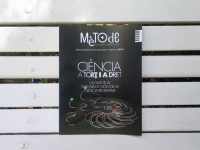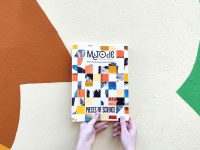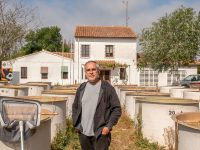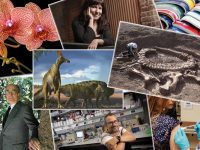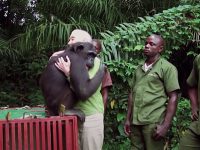Minority languages and popular science
'Elhuyar': Journalism and science in Basque

ABSTRACT
Elhuyar magazine was born in 1974 with the aim of adap-ting Basque language to science and technical fields. From that moment on, the magazine has become a publication of reference in science communication, and grants especial relevance to research done in the Basque Country, while it entertains its readers and educates them in science culture.
Keywords: science communication, Elhuyar, Basque, popular science magazines.
The mission of the Elhuyar Zientzia eta Teknologia journal is to report on science and technology. It aims to provide information in Basque language not only on science around the world, but also of the Basque Country’s developments in science and technology.
The journal is published by Fundación Elhuyar, a non-profit organization funded through member contributions, Public Administration grants and profits from its sales. The publication is put together by a multidisciplinary team with scientific training, working towards four specific objectives: to report on science, as well as scientific and technological advances and interpret them in their context; to develop and deepen scientific culture and social democracy, promoting widespread social responsibility in techno-scientific decisions; to confront pseudo-scientific beliefs; and do all this in an entertaining way for its readers.
The magazine Elhuyar performs its task from the Basque Country for Basque speakers, and thus attaches special importance to the work common to the researchers and agents of the society it serves. Therefore, the magazine is also a resource for publicizing the Basque scientific community.
The fact that its activity takes place in and for a given area can be considered a specific priority and feature of the magazine. This is not, however, its only distinguishing mark. Another distinctive feature of the magazine is the language. In a context where English is the dominant language in the scientific world, scientists must be able to speak the language of their country and to integrate science as an element of their culture (Domínguez, 2012). Indeed, the magazine is one of a kind, the sole publication dedicated to Basque scientific and technical outreach. Throughout its history, the magazine has been a reference, and still is, for the development, dissemination and standardization of Basque technical vocabulary. To help achieve this endeavour, it is backed by the long trajectory of the Fundación Elhuyar in the development and standardization of the Basque language.

Cover of issue number 150 (January 2000) showing the image announcing Gaztelhuyar, a youth supplement, advertised as a separate sixteen-page magazine. It went out of print that year, when Elhuyar created the website Zernola, aimed at children and teens.
Language and content, together from the beginning
Elhuyar magazine was born in 1974. It was created by a group of students from the EKT, Euskal Kultur Taldea (Group of Basque culture) of the Escuela de Ingenieros Superiores de San Sebastián (San Sebastian School of Engineers), whose main concern was to develop their language. In particular they addressed the adequacy of Basque to the fields of science and technology.
As remembered by its founders, the roots of the publication date back to the sixties. In the words of Iñaki Irazabalbeitia, who later became the president of Elhuyar: «The younger generation had an innovative approach to the status of the Basque language. For them Basque was not a language restricted to the home, the circle of friends or the church, but was rather seen as a tool that should be used in all areas of communication» (Various Authors, 1997). Such thinking gave way to the literacy schools and Basque culture groups. The ikastolas were strengthened and a unified Basque language emerged.
Within this social and cultural context, the first graduates of the Escuela de Ingenieros Superiores de San Sebastián took upon themselves the responsibility of taking a step in favour of language standardization in the fields of science and technology. Several factors played to their advantage such as tolerance from school principals toward Basque issues and the high percentage of Basque speakers. Thus, in 1972, three graduates and two students from the engineering school began meeting on Saturday afternoons. From that seed, the magazine was born.
One of the founders, Iñaki Azkune, tells of how they decided to name the magazine as a tribute to the brothers Fausto Fermín and Juan José Elhuyar, discoverers of the element tungsten (1783): «It was one of the main Basque contributions to the scientific-technical world, so we found the name appropriate not only for the magazine, but later on also for society» (Various Authors, 1997).
In those early years, while the group grew in number, it also won in variety, since the new additions came from various disciplines: computer science, chemistry, medicine, economics… Since then, multidisciplinarity has been one of the defining characteristics of the group of people who work and collaborate in Elhuyar.
One mission accomplished, a long way to go
After six years in which the founders held lengthy discussions of a linguistic and terminological nature, it was considered that the magazine had achieved its goal. And so, in the editorial section of the 25th issue the following was written: «These twenty issues confirm at least one thing: it is possible to write science in Basque» (Elhuyar, 1981). At the same time, they emphatically expressed their willingness to unite Basque language and scientific literature. «We wish to offer a suitable resource able to satisfy the curiosity of Basque-speaking readers interested in science and technical problems. [… ] We want to provide in Basque information which they had hitherto received in another language» (Elhuyar, 1981). But the achievements of the magazine went further: it became a reference for creating and securing technical vocabulary.
Later, in 1981, the magazine’s mission was renewed: Basque lost prominence in favour of scientific and technological content. The commentary published in the editorial said: «People will not buy magazines in Basque because they are written in Basque, but because what is said in them is interesting» (Elhuyar, 1981). This was a turning point, since the linguistic aspect had hitherto held almost as much weight as the content. However, the efforts of all those groups working for the standardization and normalization of the language allowed for the authors to focus more on the content and less on the formal aspects of language.
The magazine also changed its design and organization. The content was divided into four sections: «Material for basic education», «General scientific topics», «Science and technology» and «University».
A remarkable aspect of this new structure was that the articles published in the last section should contain a summary in English. With this, the magazine sought to make a place for itself on the international scene, which it succeeded in doing: the 29th issue announced that papers published on the subject of chemistry were to be referenced in the database Chemical Abstracts of the American Chemical Society (Elhuyar, 1982).
«‘Elhuyar’ has been a reference, and still is, for the development, dissemination and standardization of Basque technical vocabulary»
However, this new reformed magazine did not satisfy the desires and wishes of Elhuyar members, a fact confessed by Iñaki Irazabalbeitia. The magazine was not, in his view, a «standard» journal (Irazabalbeitia, 1995), because it had a book format, and because it mixed various contents, from educational material to advanced scientific articles.
Consequently, the decision was taken to divide the journal into two: on the one hand, popular science and outreach, and on the other hand, research. In December 1985 the first issue of the current magazine’s direct ancestor was published: Elhuyar Zientzia eta Teknika. It may be considered, therefore, a milestone in the history of the magazine.
The Elhuyar journal only publishing scholarly articles ceased publication in 1996. One must keep in mind that the University of the Basque Country (UPV/EHU) had been publishing a high quality outreach journal since 1989: Ekaia. And Elhuyar had, meanwhile, the magazine Elhuyar Zientzia eta Teknika, dedicated to a wider audience. Under these circumstances, another journal in Basque dedicated to the publication of high level research could hardly keep afloat.
However, the outreach magazine is alive and well, and has been subject to continuous changes responding to the evolution of society and its needs. For example, in 1989 it went from bimonthly to monthly, and in 1999 the magazine Gaztelhuyar was created, aimed at younger generations. It was published as a sixteen-page supplement of the journal Elhuyar Zientzia eta Teknika. It went out of print when in 2000 Elhuyar created the Zernola website, aimed at children and teens.
It has changed and evolved constantly. In 2002, the magazine began publishing all sections in colour. Until then, only the main articles were published in colour. And seven years later, a new name change took place, replacing the word Teknika for the word Teknologia, thus defining more precisely the type of content published by the magazine. Henceforth the publication was named Elhuyar Zientzia eta Teknologia.
Besides the name, the design, format and content of the magazine were also renewed and updated. Thus was born a product which, on the one hand, was better suited to journalistic canons. On the other hand, it allowed for the introduction of specialized sections dedicated to the analysis and review of issues related to science and technology, and to a space for papers submitted by researchers themselves.
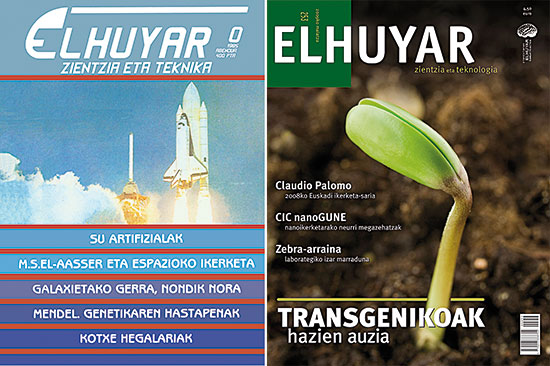
On the left, issue zero of Elhuyar Zientzia eta Teknika. The direct ancestor of the current magazine was published in December 1985. It may be considered a milestone in the magazine’s history. On the right, first magazine cover with the current design (May 2009).
Current magazine and its readers
The current publication is, therefore, the result of all these changes. It is a contemporary scientific outreach journal of high quality. It offers information and opinions, to inculcate the reader in scientific culture while entertaining them at the same time.
It is published monthly, except in August, and contains sixty pages, divided into sixteen sections. Among them are some with excellent images and curious illustrations («Flaxa», «Mundu ikusgarria», «Umore grafikoa»); others which address issues in greater depth («Gai nagusia»); some of specific content («Istorioak», «Mundu digitala», «Liburutegia», «Astronomia»); and review articles («Analisia»). All contents are published under Creative Commons license.
The magazine is on sale at newsstands in Guipúzcoa, Álava and Vizcaya, however most readers are subscribers. A total of 2,000 copies are printed, of which 1,600 are sent to subscribers. Among these are more than a thousand individuals, and the rest are schools, companies, Basque schools for adults (euskaltegiak), offices and government agencies, as well as technology centres and universities. Virtually all of the subscribers are from the Basque Country, and nearly half are from Guipúzcoa.
However, the potential readership of the magazine is larger, so promotion and communication campaigns are performed to reach them. In this way, a target public has been defined: Basque-speaking and literate persons, who are used to reading, over twenty years of age, with higher studies in science or engineering. According to these data, there are over 66,000 people with that profile just in Navarra and the Basque Autonomous Community. Thus it seems possible to increase the number of readers, despite the current unfavourable trends in the printed press.
«The name of the magazine pays tribute to the brothers Fausto Fermín and Juan José Elhuyar, discoverers of the element tungsten (1783)»
On the web, with added value
Being online is undoubtedly one of the keys to reaching a wider audience. For this purpose, the magazine Elhuyar Zientzia eta Teknologia has its own website to help promote and complete the content published on paper with the use of audiovisual media.
This is a young website, which was renewed in 2012, although Elhuyar magazine has been published in digital format since 2001. The paper edition of the magazine is the core of the Internet version, and thus the digital version shares the same mission and the same functions. However, the website has specific objectives: to share material that is not published in the paper edition (video, audio, links…); to offer complementary services to users; to attract new readers and subscribers; and, finally, to be a useful centre for the journal’s collaborators.
Additional to the content, the digital version of Elhuyar Zientzia eta Teknologia provides the following tools to receive, seek and share information: file downloads, normal and advanced engine search, newspaper archives, RSS Feed (with optional subscription to the complete content or by sections), the possibility to post public comments and share content in various networks and to become a follower of the magazine’s Facebook and Twitter pages.
The website receives over 2,500 hits per month. The most frequently consulted sections include the latest issue of the magazine as well as the space for subscriptions. From the latter, the user can subscribe to the digital version. In this way, it is cheaper for the public and offers the possibility of downloading files in pdf format, as well as accessing other services. Recently, the magazine made the necessary changes to allow access from mobile devices.
A notable point is that the magazine search engine is specifically developed by Elhuyar computer services, and thus is shaped to the characteristics of their own website and takes into account the specificities of the Basque language.
«Being online is undoubtedly one of the keys to reaching a wider audience»
Moreover, the magazine also features another portal on the Internet: Zientzia.net. It is a platform that collects and provides scientific contents developed by Elhuyar for the general public in an integrated way. It was created in 2001 and was renovated in 2011. The web receives over 15,000 visits a month, and currently has more than 16,000 articles of various media (articles, audio and video) only in Basque. Virtually all written content belongs to the magazine Elhuyar Zientzia eta Teknologia.
One of Zientzia.net’s special features is its multilingual search engine (Saralegui and Lopez de Lacalle, 2009; 2010a; 2010b): the first search engine, among Internet’s multilingual search engines, which integrates Basque. Once a query in Basque is put forward, the search engine gives results in Basque and English related to the requested search from reference websites. The selection of such websites has been made by the magazine team, and they include, for example, Science News, Nature News and PhysicsWeb.
Furthermore, Zientzia.net has also its own multilingual document linker. Its name is Dokusare, created by computer scientists at Elhuyar, and is more advanced than the conventional document linkers (Saralegi and Alegria, 2007).
Normally, links to content related to a specific subject are made by simple automated methods. Such methods are based on mere word matches. The links usually refer to content of that same website, and are usually in the same language. The Dokusare technology, however, is able to relate content in different languages and find those similar in different websites.
Zientzia.net offers the possibility of consulting Elhuyar expert staff about Basque terminology and technical lexicon, as well as consulting the Elhuyar Encyclopedic Dictionary of Science and Technology, published in 2009. The work contains some 23,000 items and 607 encyclopedic articles in fifty areas of knowledge. The terms appear in four languages: Basque, Spanish-Castilian, French and English.
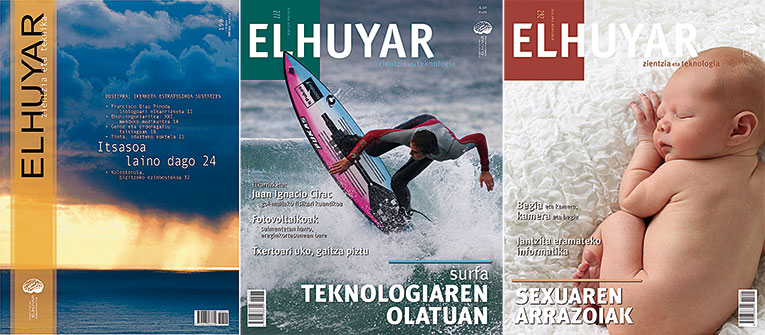
The magazine has changed continuously to respond to the evolution of society and its needs. The picture shows magazine covers for issues number 190 (September 2003), 277 (July 2011) and 292 (December 2012).
The Science Unit
In addition to the aforementioned useful tools, Zientzia.net platform offers a plethora of contents – not only from the magazine, as it includes material from other sources – most especially audio files from the Norteko Ferrokarrilla dio show and video files from the Teknopolis television programme.
This is because Elhuyar, through its Science Unit, is responsible for these radio and television programmes, intended for a general audience. Both programmes are broadcast on public radio and television (EITB), and each of them has its own website. Zientzia.net is nourished by those sites.
However, the Science Unit is not limited to the general public. It also addresses other sections of the public: in 2002 it created the Basque Research website for the specialized public, which collects news on research, development and innovation in the Basque Country, to report them internationally. The Basque researchers use it to publish their research and journalists use it as an information source.
Several projects for teens and children have also been undertaken. The Zernola website is the oldest among them. It was launched in 2001 with the aim of providing science and technology news, easy to understand and attractive for the younger generation aged between eight and twelve years. This website is intended as a parallel and complementary tool to the educational system.
However, to cater to this specific public segment, direct actions have been encouraged. An example of this is the summer camp for youths between twelve and sixteen years old, the travelling science experiments project named ZientziaLive, or the science fair Teknoskopioa, which promotes scientific and technological projects.
In addition to the above, the Fundación Elhuyar is coordinating the European research project STIMULA Stimulating Science And Technology Competences Through Innovative Means For Teaching And Learning. The project aims to promote science and technology among young people between twelve and eighteen.
On another level, the Science Unit, through the Laboratorio Elhuyar de Cultura Científica, (Elhuyar Laboratory for Scientific Culture), channels those projects aimed at promoting insight on science and technology. To cite a few, among them is the recently presented Estudio sobre la percepción social de la Ciencia y la Tecnología en el País Vasco (2012) (Research on the social perception of science and technology in the Basque Country), La percepción de la ciencia y la tecnología entre la juventud vasca (2011) (Perception of science and technology among Basque youths), Percepciones de la ciencia y la tecnología en el País Vasco (2009) (Perception of science and technology in the Basque Country) and Tratamiento en la prensa diaria de la ciencia, la tecnología y la innovación (2008) (Treatment of science, technology and innovation in the daily press).
Another initiative of the Science Unit are the CAF-Elhuyar Awards. They emerged in 1994 with the aim of promoting the emergence of new writers and creation of outreach science in Basque. In the last edition a new category was launched: a scholarship for «science in society» in order to help projects which work on the interaction between science, technology and society.
«The magazine’s website helps to disseminate the content published in the paper version and complement it with audiovisuals»
The Elhuyar Group
The Science Unit employs many pathways to bring science and technology to society, and in doing so has the support from the whole Grupo Eluyar (Elhuyar Group). Grupo Eluyar consists of three companies: the Fundación Elhuyar (Eluyar Foundation), Consultoría Eluyar (Elhuyar Consulting) and the language engineering society Eleka.
Fundación Eluyar is committed to the popularization of science and technology and the development of Basque. Meanwhile, the Consultoría Eluyar operates in three areas: Basque plans and general linguistic plans, participatory processes and development of gender issues. Their work is based on the principles of equality and participation, and pays special heed to minority languages. Finally, Eleka develops and markets multilingual products and services, based on language technologies. It deals mainly in the areas of automatic translation tools, translation assistance, automatic correctors, web technology (search engines and semantic networks), applications for working in Basque, dictionaries, competitive intelligence and speech technology.
The three companies constituting the group share the same mission: to build and consolidate areas related to the Basque language in order to help build an active, aware and Basque-speaking society. And in that sense, the magazine Elhuyar Zientzia eta Teknologia is a fundamental part of this mission.
References
Domínguez, M., 2012. «Ciencia vs. lengua. El catalán como lengua de ciencia». En Díaz-Fierros, F. and X. Mariño (eds.). Escribir de ciencia en galego. Consello da Cultura Galega. Santiago de Compostela.
Elhuyar, 1981. «Editoriala». Elhuyar, 26: 3-6.
Elhuyar, 1982. «Editoriala». Elhuyar, 29: 2.
Irazabalbeitia, I., 1995. «100 ale bizkar gainean». Elhuyar, 100: 25.
Saralegi, X. and I. Alegria, 2007. Similitud entre documentos multilingües de carácter técnico en un entorno Web. SEPLN 2007. Seville.
Saralegi, X. and M. López de Lacalle, 2009. Comparing Different Approaches to Treat Translation Ambiguity in CLIR: Structured Queries vs. Target Co-Occurrence-Based Selection. Proceedings of TIR 2009. Linz.
Saralegi, X. and M. López de Lacalle, 2010a. Dictionary and Monolingual Corpus-Based Query Translation for Basque-English CLIR. LREC 2010. Malta.
Saralegi, X. and M. López de Lacalle, 2010b. Estimating Translation Probabilities from the Web for Structured Queries on CLIR. ECIR 2010. Milton Keynes.
Various Authors, 1997. Elhuyar 25 urte. Iragana, oraina, geroa. Elhuyar Kultur Elkartea. Ursubil.

